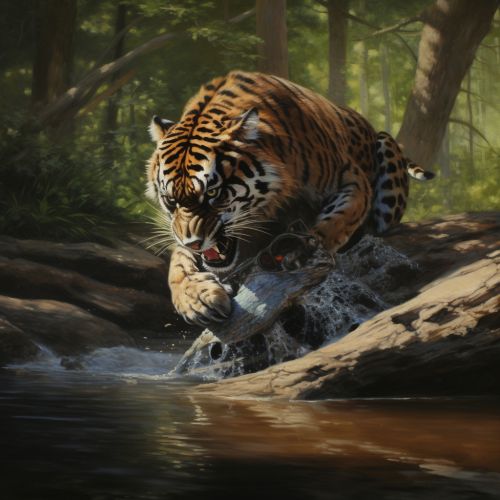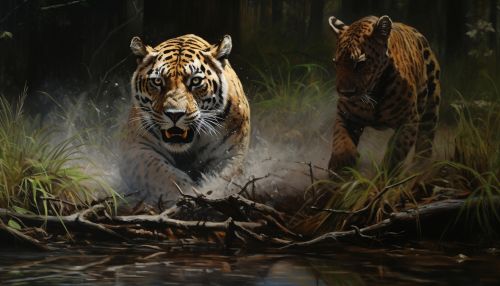Behavioral Ecology of Predation Risk
Introduction
Behavioral ecology is the study of the ecological and evolutionary basis for animal behavior, and the roles of behavior in enabling an animal to adapt to its environment. Predation risk is one of the most potent selective pressures in the ecology and behavior of prey species. The behavioral ecology of predation risk involves the study of these behaviors and the ecological contexts in which they occur.
Predator-Prey Interactions
Predator-prey interactions are a central theme in the study of behavioral ecology. Predators exert strong selective pressures on their prey, shaping their behavior, morphology, and life history traits. Prey species have evolved a range of behavioral responses to reduce their risk of predation, including changes in activity patterns, habitat use, group size, and defensive behaviors. These behaviors can have significant impacts on individual fitness and population dynamics.


Perception of Risk
The perception of risk by prey species is a critical component of their behavioral responses to predators. This involves the ability to detect predators, assess the level of threat they pose, and respond appropriately. Prey species use a variety of sensory cues to detect predators, including visual, auditory, olfactory, and vibrational signals. The perception of risk can also be influenced by environmental factors, such as habitat complexity and the availability of refuges.
Risk Assessment
Risk assessment involves evaluating the level of threat posed by a predator and deciding on an appropriate response. This can involve a complex decision-making process, taking into account factors such as the predator's size, distance, speed, and direction of movement, as well as the prey's own condition and the availability of escape routes. Risk assessment can also be influenced by previous experiences with predators and the presence of conspecifics or other potential prey species.
Anti-Predator Behaviors
Prey species have evolved a range of anti-predator behaviors to reduce their risk of predation. These can be broadly classified into two categories: avoidance behaviors and defensive behaviors. Avoidance behaviors include changes in activity patterns, habitat use, and group size to reduce the likelihood of encountering predators. Defensive behaviors are used when a predator is encountered, and include fleeing, freezing, fighting, and signaling to the predator or to other members of the prey species.
Effects on Population Dynamics
The behavioral responses of prey species to predation risk can have significant impacts on their population dynamics. Changes in activity patterns and habitat use can affect the availability and use of resources, while changes in group size can influence social dynamics and reproductive success. Defensive behaviors can also have direct fitness costs, such as energy expenditure and the risk of injury or death. These effects can influence population growth rates, spatial distribution, and the structure and composition of communities.
Evolutionary Aspects
The behavioral responses of prey species to predation risk are shaped by natural selection. Prey species that are better able to detect predators, assess risk, and respond appropriately are more likely to survive and reproduce, passing on their genes to the next generation. This can lead to the evolution of more effective anti-predator behaviors and the co-evolution of predators and prey. However, these behaviors can also be influenced by other selective pressures, such as competition for resources and mates, and can involve trade-offs between predation risk and other aspects of fitness.
Conclusion
The behavioral ecology of predation risk is a complex and dynamic field of study, involving the interplay of ecology, behavior, and evolution. It provides valuable insights into the ways in which animals interact with their environment and each other, and the forces that shape these interactions. By understanding these processes, we can gain a deeper understanding of the natural world and the diverse life forms that inhabit it.
